Music is the universal language
“Glory to God in the highest heaven, and on earth peace to those on whom his favor rests.” - Luke 2:14
Norse Guitar Feeds
Fortin Kali Review
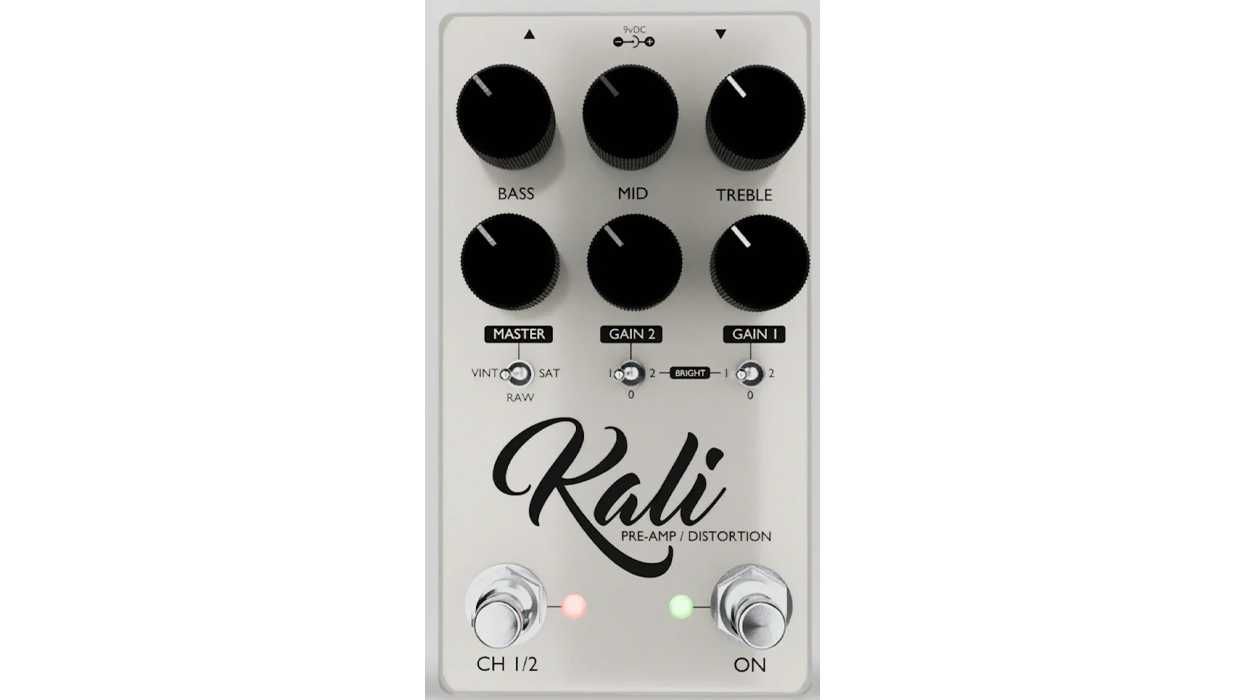
The aptly named Kali distills elements of the Fortin Cali—a Plexi-inspired amp—into a 2-channel pre-amp and distortion pedal. Each channel has three gain modes—vintage, raw, and saturation—which are selectable via a mini toggle. And each mode has a very distinct vibe, which could be loosely categorized as low-end-heavy, midrangey, and high-gain-centric, respectively.
Charging right into Kali’s arms, I selected the vintage mode on Channel 1, and set the gain 2 knob to 9 o’clock. The gain 2 knob, which controls the gain level that hits the circuit’s front end, is the default gain knob for both channels. The gain 1 knob, which adds additional gain stages, only works on channel 2. But even at this modest setting, I was already into toothy distortion that was very touch-sensitive.
Wide Range of Rage
Without changing any other settings, things got significantly filthier by merely switching over to the saturation mode. And even at this lower-gain setting, the output is tailor-made for heavy rhythm in a classic metal jam. Pumping the gain 2 knob to around 3 o’clock, meanwhile, makes the Kali a very in-your-face proposition, with sounds rooted in Sunset Strip/Jose Arredondo Marshall-mod energy.
Interestingly, even though saturation mode has the most aggressive gain structure, it doesn’t feel especially compressed. It’s also the quietest of the three modes when tested across identical settings. This was especially noticeable when I switched between vintage and saturated modes at high gain 2 settings. It follows, then, that raw mode—the pure sound of the pedal without any extra gain stages and essentially the preamp only—is the loudest of the three modes.
Well Put Together, With a Bright Personality
Channel switching is handled by one of the two footswitches (the other
is for bypass) and it enables you to cascade one channel into another. In cascaded-stage mode, gain knob 1 is active and serves as a pre-gain (hence the gain 1 designation). In saturation mode, with both gain knobs at noon, switching between the channels sounds organic. Channel 2 is generally thicker and sustains bends for a tad longer. But the two channels definitely do not feel haphazardly thrown together. They are clearly cut from the same cloth.
“[It’s] a very in-your-face proposition, with sounds rooted in Sunset Strip/Jose Arredondo Marshall-mod energy."
In general, the Kali is bright, but if you need brighter, there are a pair of 3-position bright switches for each of the two channels. At low output volumes the changes offered by these bright switches are noticeable but not too dramatic. They are much more pronounced at high output volume. The active +/- EQ knobs actually have much greater impact on the Kali’s personality—particularly in the zones between 9 and 3 o’clock, where minor tweaks yield very different tonal realms.
The Verdict
The Kali comes across as a cohesive whole, yet its interactive controls and powerful EQ unlock a wide range of Plexi and modded-Plexi tones. No matter how you set it, it sounds impressive.
Podcast 518: Courtney Hartman
Singer-songwriter/guitarist Courtney Hartman joins us again on the podcast to share the story of her forthcoming album, With You. The album – her first since becoming a parent – is a beautiful collection of songs with a unique backstory. To help finish the record, she turned to fellow songwriter moms in her orbit.
It’s a beautiful record and a great talk. Added bonus: We’re streaming her new single “Everything at Once” on our site here. Check it out!
Follow Courtney here.
Our new, 57th issue of the Fretboard Journal is now mailing. Subscribe here to get it.
Our next Fretboard Summit takes place August 20-22, 2026 at the Old Town School of Folk Music in Chicago. https://fretboardsummit.org
We are brought to you by: Stringjoy Strings: https://stringjoy.com
(Use the code FRETBOARD to save 10% off your first order)
Mike & Mike’s Guitar Bar: https://mmguitarbar.com
Peghead Nation: https://www.pegheadnation.com (Get your first month free or $20 off any annual subscription with the promo code FRETBOARD at checkout).
The post Podcast 518: Courtney Hartman first appeared on Fretboard Journal.
Lowden’s AI-equipped guitars can now tell you how they’re feeling – or where they are

In an age where AI in music often sparks debate about creativity, Northern Irish maker Lowden Guitars is taking the technology in a more practical direction. Its latest instruments come fitted with built-in smart sensors designed not to write songs, but to help players better care for their guitars – and maybe even fend off thieves.
Lowden, whose roster of players includes Ed Sheeran, Eric Clapton, and Mark Knopfler, is the first major acoustic builder to embrace AI in this way. The smart sensor tracks a guitar’s “health information” in real time, monitoring temperature, humidity, vibration, and even location.
Owners can then keep tabs on their instrument via the companion app Mylowden. Built in collaboration with Storm Reply, ubloquity, and Amazon Web Services, the app doubles as a digital logbook. It stores data in the cloud, provides access to warranty and insurance services, and offers tips for keeping guitars in peak playing condition.
“I’m very excited to know that this program has been developed in conjunction with AWS in the hope that guitar players will always have the assurance of knowing where their guitar is, and what sort of condition it has been kept in,” says founder George Lowden.
The app also records GPS location, ownership history, and the materials used in each build. Players can even document key events in the life of their guitar – from songwriting sessions to gigs.
“Lowden is the first guitar maker to embrace this type of technology in a way that enables musicians to grow their understanding and connection with their instruments,” says Managing Director Aaron Lowden.
“From practical information about their instrument, including climate, any knocks it could potentially take during travel, and documenting key services or repairs, key moments in playing, songwriting, collaborating, and performing, this technology will enhance the Lowden ownership experience.”
He adds that the technology “is really limitless, and new features will be rolled out over time”.
Learn more at Lowden.
The post Lowden’s AI-equipped guitars can now tell you how they’re feeling – or where they are appeared first on Guitar.com | All Things Guitar.
A Look Inside Montreal’s Guitar-Building Cooperative
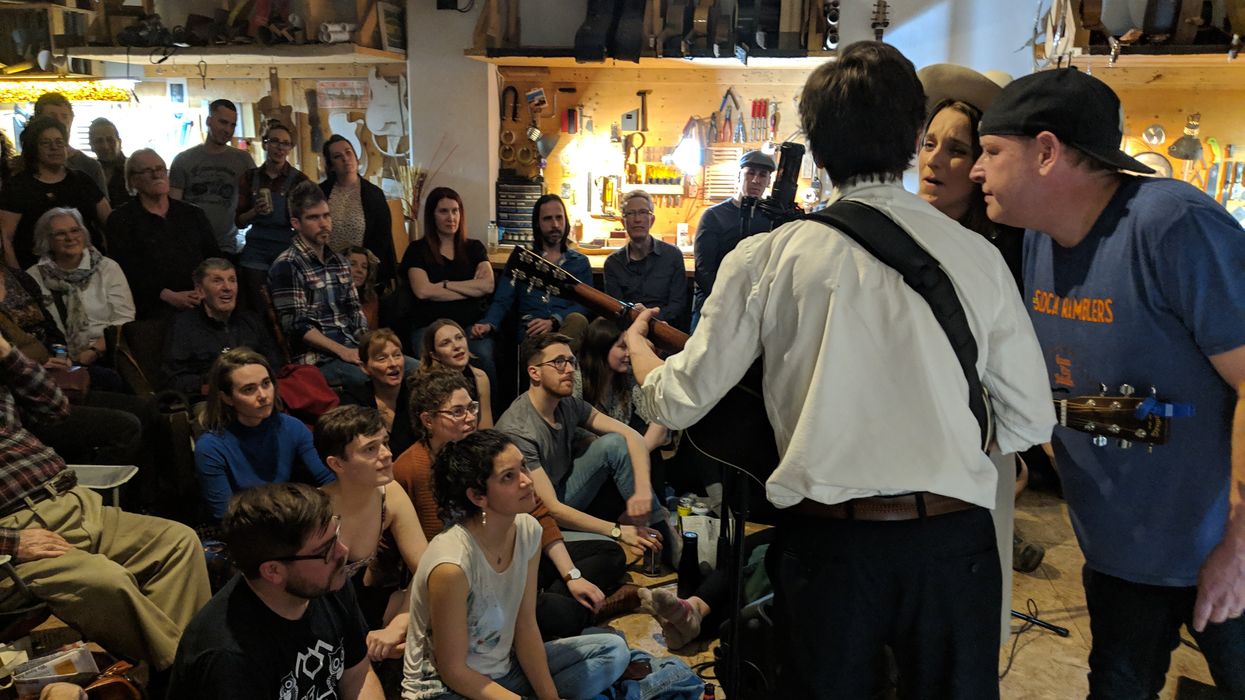
It was 2022. I had just moved across the country from Edmonton, Alberta, to Montreal, Quebec, and I was working a remote tech job that I didn’t like very much. Outside my home office, Montreal was just starting to poke its head out of the Covid lockdowns, and a small taste of its arts and music scene planted a seed in my brain. I had to find something better to do than that tech job.
I stumbled across the Mile End Guitar Coop while searching for guitar stores. But this was clearly something more interesting than just a retail shop; their website explained that this was a cooperative of independent guitar builders.
The first time that people set foot in the shop, they often stop at the door for a moment in awe. That’s exactly what I did. The first thing I noticed was that the shop smelled really good—like wood and coffee. All around were tools, stacks of wood, machines, and guitars in various stages of the building process. I was shown around by Nicholas Brygidyr of NGB Guitars, a former coop member, and Brett Hawes, a current member who runs Belvedere Instruments. Nick and Brett showed me how they wind custom pickups. I was fascinated!
On another visit, I talked to Josh Greenberg of Larkspur Lutherie. He showed me his gypsy-jazz guitars, some of the loudest, clearest acoustic guitars I’ve played. I was introduced to Nic Delisle of Island Instruments and held some of his retro-inspired electric guitars.
“One of the most valuable aspects of the Mile End Guitar Coop is the sharing of ideas.”
I also met the founders of the coop: Mike Kennedy of Michael Kennedy Guitars and Jeremy Clark of 52 Instruments. Mike and Jeremy told me how they started the coop in 2008 after apprenticing with renowned builder Sergei de Jonge; the coop was built partly to continue this long tradition of passing on experience to newcomers. While I was there, I watched Mike bend sides for a guitar. The smell of heat and steam through Indian rosewood was delicious, and something I remember to this day!
Over the course of the next several months, I learned how to build an acoustic guitar as Mike’s apprentice—an invaluable experience. Eventually, a spot opened up for me in the coop and I became a full member. Since then, I quit my tech job, and for the past couple of years, I’ve been building my own Ursa Instruments banjos and doing repairs for local musicians. I’ve got some guitar builds on the way, too!
I always dreamed of building instruments, but the barriers to entry seemed insurmountable. First, I would need to learn the craft. Then, I’d need to set up my own shop, pay rent, and buy machines and tools—all this before even thinking about where to find customers. I know I speak for all my shopmates when I say that without the support of the coop, most of us wouldn’t be able to do this.
We often get asked by other builders about the logistics of setting up a coop. We are legally designated as a cooperative, and we share many expenses, the largest being rent. But that’s just the legal side of things. One of the most valuable aspects of the Mile End Guitar Coop is the sharing of ideas. Despite the fact that we all have our own business, everyone is eager to share. Techniques are developed and spread around the shop. For instance, a method of laminating guitar sides known as “structured sides” was incubated in this shop. I believe I’m the first person to use this technique for banjo rims! I’ve also learned a lot about the testing of the acoustic properties of wood, mainly from Jeremy, who has developed a simple system of measuring the stiffness of guitar tops.
Another one of my mentors in the shop is Lenny Piroth-Robert of Daddy Mojo Instruments. Every aspect, from the wood, to the paint, to each knob, is chosen with an uncompromising eye. Lenny has also built a few electric banjos, and we’ve traded notes about banjo neck carving and setup. I’d also like to give a shoutout to my other shopmates: Morgan Deslongchamps (Deslongchamps Guitars), Oliver Duval-Quinn (Quinn Guitars), and Mathieu Dallaire-Walker (Dallaire-Walker Lutherie)—all doing world-class work.
Beyond just being a workshop, we also want the coop to facilitate music from local and travelling musicians. We host about one show each month in the shop. These shows are intimate affairs where everyone sits on the floor under lamplight and listens to an acoustic performance. We want the coop to be a community hub for musicians and builders.
The Mile End Guitar Coop is a very special place to myself, my shopmates, and the many people around the world who play our instruments. Next time you’re thinking about ordering a custom instrument, whether it be an acoustic guitar, classical guitar, banjo, or something else, consider one of us. Or, if you’re in Montreal, get in touch, and we’ll schedule a visit.
The Music Education Foundation Announces MusicPro ’26

Give A Note Foundation, a 501(c)(3) organization dedicated to nurturing, growing, and strengthening music education opportunities, announced the MusicPro’26conference for professional and aspiring musical artists to take place March 27-29, 2026, at MusiciansInstitute in Hollywood. The event will feature learning sessions about achieving success in today’s music industry and provide artists with a unique opportunity to network with fellow musicians and leaders in the music industry. Founding sponsors include MusicPro Insurance, Pandora AMP, SoundExchange,BMI, PaulReed Smith Guitars, Pearl Musical Instrument Co., DistroKid, Bandzoogle, California State University Northridge, Let Music Fill My World, Musicpreneur Academy, Music Connection, Premier Guitar, andAmerican Songwriter, among others. A waiting list for attendees was activated today and can be found at musicpro26.com, with attendee badges going on sale on October 24, 2025.
“According to Luminate, 100,000 to 120,000 new songs are uploaded to streaming services every day, making the challenge of ‘breaking out’ harder than ever,” said Give A Note CEO Dendy Jarrett.“MusicPro’26, will give artists a chance to immerse themselves in the latest trends, discuss collaborations, and contemplate new strategies."
The Musicians Institute campus during spring break is the perfect site for such an endeavor, brimming with music and AV gear and the personnel to run it. With multiple state-of-the art recording studios, wired classrooms, multiple stages and private one-on-one consulting rooms, a music college becomes an extraordinary music meeting facility.
Attendees can expect a robust schedule of panel discussions, live interviews and keynotes, workshops, demonstrations ,performances and receptions announced periodically from October through March. MusicPro ’26 is produced by Westchester Media. Companies wishing to exhibit, create content and/or sponsor should reach out to Jake Martin at jmartin@intunepartners.com.
About Give A Note Foundation:
Give A Note Foundation is a national 501(c)(3) organization with a mission to engage and empower educators, inspire students, and expand the reach and impact of music education. Founded in 2011 with an initial investment from 21st Century Fox and TV show GLEE, and in cooperation with CMA Foundation,Radio Disney, and National Association for Music Education, Give A Note has awarded grants in excess of$1.5 million dollars. Give A Note delivers opportunities for students to become their best selves through learning and creating music. #MusicEdMatters. “Creating Better Humans Through Music."
Seymour Duncan Announces The Joe Bonamassa "Bolin Burst" Humbucker Set
Owning a guitar that was played by one of your musical heroes is a rare opportunity, made even more remarkable when the instrument’s sound lives up to its legacy. Joe Bonamassa has long been a fan of the late great Tommy Bolin, whose captivating solo music and work with Deep Purple, James Gang, Billy Cobham, and Zephyr influenced generations of rock & fusion guitarists.
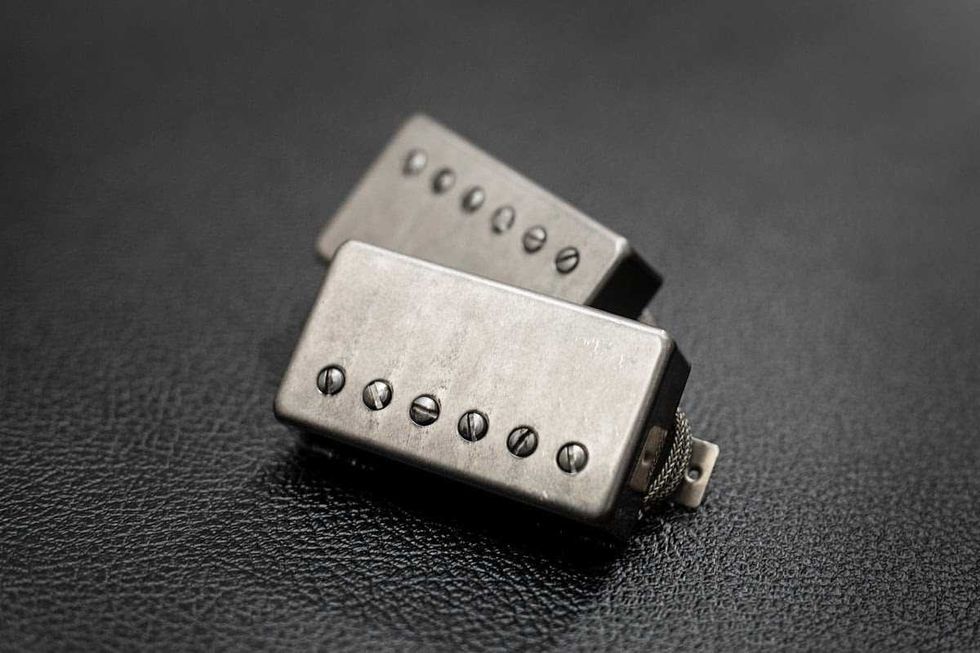
The Seymour Duncan Custom Shop is proud to offer this special pickup set featuring:
- Precisely recreated original 1960 P.A.F. humbuckers analyzed by the Seymour Duncan Custom Shop
- Limited Edition First Run (500 sets) feature signatures from Joe Bonamassa and Seymour W. Duncan
- Alnico 2 Magnets deliver authentic vintage tonality with dynamic bridge and warm neck pickup characteristics
- Custom Aging process matches original pickups' authentic vintage appearance
- A portion of the Proceeds Support Tommy Bolin's Musical Legacy through dedicated endowment and memorial funds
MAP pricing:
Set: $375.00
When Joe met Tommy’s late brother Johnnie, he inquired about a very special 1960 Gibson® Les Paul® that Tommy had played throughout his career. The “Bolin Burst” Les Paul was originally purchased and owned by Tommy’s friend and long-time guitar tech David Brown and became his replacement after his own Les Paul goldtop was stolen at a Zephyr gig. The guitar features a unique American flag pickguard hand-painted by Brown in the early 70s. It was meant to be an American twist on the British Invasion’s Union Jack which was so prevalent in artwork at the time. A Fender-style Bigsby® vibrato was also pulled off a Telecaster® and fixed on the Les Paul at Tommy’s request to better suit his playing style. These modifications aside, it is acknowledged that the fine tone of this instrument came to a great extent from its original pickups: a very special set of P.A.F. humbuckers.
After an extensive 10-year search, Joe was able to locate and purchase this one-of-a-kind guitar from David Brown himself. Admiring the unique sonic qualities of this particular guitar, Joe approached his friends at Seymour Duncan to analyze in detail the P.A.F.s in order to create his newest pickup project. The Seymour Duncan Custom Shop was able to successfully recreate the iconic tone of the “Bolin Burst” pickups and Joe and the Bolin estate are now making them available to everyone.
The Joe Bonamassa “Bolin Burst” Humbucker set utilizes Alnico 2 magnets to replicate the original’s sweet vintage tonality. The bridge pickup provides a dynamic and barky sound, while the neck pickup sings with warmth and clarity - especially through your favorite overdriven amp.
Aged in the Seymour Duncan Custom Shop to match the look of the original pickups, the first 500 sets of the “Bolin Burst” Humbuckers are built with bottom plates signed by Joe and Seymour W. Duncan and are available in limited edition numbered packaging.
A portion of the proceeds from each “Bolin Burst” Humbucker set will be donated to the Tommy Bolin Endowment and Tommy Bolin Memorial Fund.
Nuno Bettencourt Launches Own Guitar Company, Nuno Guitars
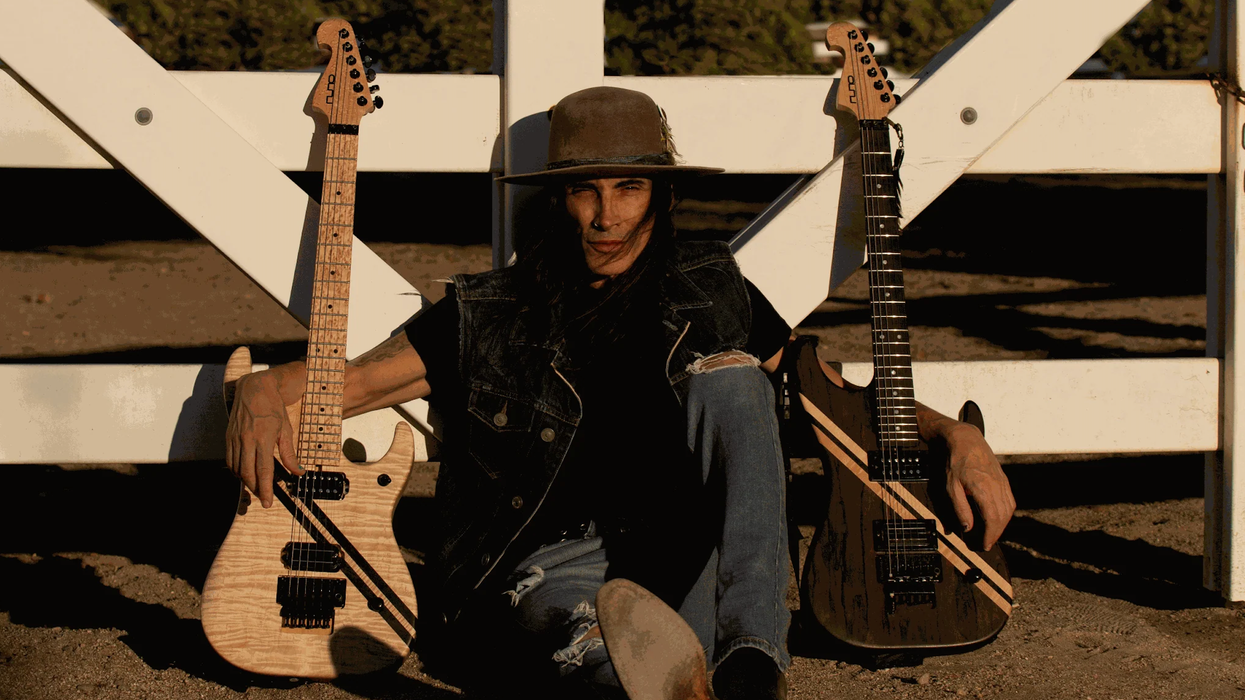
Legendary guitarist Nuno Bettencourt has announced the launch of Nuno Guitars, his own guitar company, marking a new chapter after more than 30 years with Washburn.
"I'm super excited to announce that today, this second, right now as we speak in real time, I'm launching my own guitar company," Bettencourt said in a video post to his official Instagram page. "Had a great run with Washburn, a good 35 years, I believe, which is pretty insane."
The Extreme guitarist emphasized that this move has been years in the making, driven by his desire to connect more intimately with the guitar community. "One of the main reasons is I wanted to be able to kind of deal directly with y'all, with guitar players and fans that purchase any of my guitars," he explained. "I wanted to kind of build this community now and be able to engage with you on a deeper and a closer level."
Serving as both founder and CEO, Bettencourt is launching two new models—the Dark Horse and the White Stallion. These instruments represent what he calls "true workhorses" that reflect the same dedication he brings to his performances.
In a direct-to-consumer approach, the new venture will enable players to purchase the same guitars Nuno uses on stage and in the studio. Bettencourt could recently be seen playing the guitars onstage at Black Sabbath's Back to the Beginning benefit concert at Villa Park in Birmingham and at the 2025 MTV VMAs.
"Once you own a Nuno guitar, you are forever a part of my family," Bettencourt stated.
For more information, you can visit nunoguitars.com, though Bettencourt notes the website is still developing. The company is building everything in real time, with pre-ordering options coming soon.Guitar.com Magazine: here’s how to get your copy of the September/October 2025 issue

A new issue of Guitar.com Magazine is out this week – and comes in a bundle with NME Magazine! Here’s how you can get a copy of the September/October 2025 issue.
In April, we announced the relaunch of the Guitar.com print edition after a four-year hiatus, and in May launched the first new issue with Mateus Asato on the cover. This Thursday, you’ll be able to get your hands on the second issue of Guitar.com Magazine, featuring unmissable features and reviews, which comes with a copy of the September/October 2025 issue of NME Magazine.
Mark your calendars for Thursday October 2 at 2pm BST – that’s when the cover stars of both magazines will be revealed and the mags go on sale exclusively via retailer Dawsons. The waiting room is open, so check it out now.
Besides Guitar.com, MusicTech has also returned to print. Guitar.com, MusicTech and NME are sister publications under NME Networks. The new Guitar.com and MusicTech print editions will alternate with every bi-monthly edition of NME Magazine – which itself was relaunched in 2023 – meaning three print editions per calendar year for each brand.
Subscribe here for more information about the Guitar.com Magazine and for the chance to receive an exclusive queue jump opportunity, where readers can get their hands on a copy before anyone else. Guitar.com will be sending out queue jump tickets shortly before the magazine goes on sale to randomly chosen subscribers.
The post Guitar.com Magazine: here’s how to get your copy of the September/October 2025 issue appeared first on Guitar.com | All Things Guitar.
“We’re very sad… more than we can express”: The Beths appeal for help after guitars and gear stolen on tour

New Zealand indie rock band The Beths have appealed to fans for help after having their instruments and touring gear stolen while on tour in Europe.
In a post to Instagram, the group say their guitars, bass, cymbals, snare, pedalboard, and “entire rented backline” were taken overnight from their van in Tourcoing, France, near Lille.
“If you see any of these instruments turn up on resale, or if you have any tips please get in touch – info@lookoutkid.com,” the band writes. “We’re pretty sad, these instruments have a lot of time and love in them. More than we can express really.”
Among the missing items are frontwoman Elizabeth Stokes’ Martin 00-15M and Trent M2 model, guitarist Jonathan Pearce’s Burns Double Six 12-string, and a 1978 Goldtop Les Paul Deluxe. The band also shared photos of the stolen gear on Instagram in hopes of tracking it down.
Fortunately, thanks to “the generosity of friends”, The Beths were able to play their scheduled show in Tourcoing.
“Show tonight is going ahead thanks to the generosity of friends,” the post reads. “Thanks so much Florianosaure and Admlg for helping with backline, Dateline for lending instruments and Gabriel Delicious for lending a pedal board.”
Currently touring Europe in support of their new album Straight Line Was a Lie, The Beths still have 14 shows scheduled for October. Check out the full list of dates at the band’s website.
Meanwhile, gear theft remains an ongoing problem for touring musicians. Earlier this year, Australian jazz/funk outfit Hiatus Kaiyote had equipment worth “tens of thousands of dollars” stolen from their studio in Melbourne, while Heart reported the theft of two “irreplaceable instruments” just before a show in Atlantic City, New Jersey, in June.
The post “We’re very sad… more than we can express”: The Beths appeal for help after guitars and gear stolen on tour appeared first on Guitar.com | All Things Guitar.
“You have to love creating music to do this – everything else is the bad part”: Wolfgang Van Halen on being a musician in 2025

Having joined one of the biggest rock bands in the world when he was just 16 years old, Wolfgang Van Halen is no stranger to the ups and downs of the music business.
In a new interview with Baltimore radio station, 98 Rock, the musician reflects on what it’s like navigating the industry in 2025 as the leader and frontman of his own band, Mammoth.
“You certainly learn more and more. It’s not the greatest business, but what is nowadays? I think especially in the day of streaming, you’re the product,” says Wolfgang [via Blabbermouth]. “You don’t really have much choice in how you get used.”
He argues that the rise of AI has only made things worse: “And then you’ve got all this AI stuff that’s kind of ruined stuff even more. So you have to really love playing and creating music to do this, because that’s the good part. Everything else is the bad part.”
According to Wolfgang, staying grounded in the chaos comes down to persistence, luck, and surrounding yourself with the right people.
“I believe there’s that one Hunter S. Thompson quote that’s really… I don’t think I can say it right now, but, yeah, I think you just keep moving. You learn and you surround yourself with people you trust, and hopefully, you throw a little dash of luck in there and you can somehow find your own niche, so to speak.”
Asked if he’d ever used AI as a “tool” himself, Wolfgang says that while he’s dabbled in it, he sees it as little more than a utility.
“I’ve messed with it just randomly, but to me, it’s like a ruler,” he explains. “Use it if you wanna do a slightly more in-depth Google search. But I’m not gonna sit here and be, like, ‘write a song’ or ‘draw a picture.’ AI should be putting mufflers on cars, not making music and doing our creative jobs. It should be doing the menial stuff we don’t wanna do.”
The musician also doubled down on the issue in a recent interview with Springfield, Missouri’s Q102 radio station, calling generative AI “really stupid”.
“I just think it’s dumb. I think it’s a waste of time,” said Wolfgang. The 34-year-old was equally blunt about the role labels play in pushing AI into music, arguing that it all comes down to cost-cutting, not creativity.
“Yeah, it’s lame. Well, you know why? ‘Cause it allows you to pay less people,” he said, adding that “it’s never really about what’s being made” but rather “how quickly you can make it and shovel it out to people”.
The post “You have to love creating music to do this – everything else is the bad part”: Wolfgang Van Halen on being a musician in 2025 appeared first on Guitar.com | All Things Guitar.
Here’s what Ozzy Osbourne taught Andrew Watt about mixing rock songs: “He would always say to me, ‘Listen to Led Zeppelin and tell me what the loudest thing is’”

At 34, Andrew Watt has seen just about everything the music world has to offer. The Grammy-winning producer has worked with the Stones, Elton John, Post Malone – and, perhaps most famously, Ozzy Osbourne, producing the Prince of Darkness’ final two albums, Ordinary Man (2020) and Patient Number 9 (2022).
In a new interview with Rolling Stone, Watt opens up about what it was like to be mentored by Osbourne, as well as some of the key lessons he picked up from the Black Sabbath legend in the studio.
“You have to understand. This man was making Paranoid when he was 21 years old. So he had a 55-year career where everything was grandiose and at the highest level,” says Watt. “And he’s one of the smartest people I have ever met, and a history buff, and a genius, a literal genius. His persona was [just] persona. He was incredibly brilliant, incredibly sharp.”
According to Watt, Osbourne’s ears were second to none.
“His ears were reactive. You could think he wasn’t listening and he heard every single thing. There’d be times we’d be in the studio listening to something and he’s just drawing and I’m like, “Oh, he is not listening.” And then he’d just give me this one line that cuts so deep, in a positive way.”
One lesson, in particular, has stayed with him: “He would always say to me, ‘Listen to Led Zeppelin and tell me what the loudest thing is.’ And me, having my confidence, I’d be like, ‘It’s the drums. John Bonham.’ He said, ‘Nope, not the drums.’ He said, ‘It’s the bass.’”
“He pointed out the bass is the most important thing in a rock song. You have to make sure the bass is there and pumping and cutting through and providing that sense of rhythm, because it’s the bridge between the drums and the guitars.”
“It makes the song heavy,” Watt continues, “because the guitars can poke through if you have them mixed in the right way. The bass is a hard thing to really get cutting, but also representing the bottom.”
That philosophy shaped the records they made together: “He was very bass-focused, mix-wise, and making sure the bass came through,” says the producer. “And if you listen to the records that we made together, there’s a lot of bass on those records. Under the Graveyard has so much low end, if you check that out. He was involved in every detail of every single mix-down, too. That’s how much he cared.”
In other news, Watt has confirmed that new music with the Stones is on the way, following the success of 2023’s hit record Hackney Diamonds.
“I’ve said it before, but it’s like working for Batman,” he told Rolling Stone. “When the tongue [logo] is up in the air, you just go… I can say we did some recording together, but that’s all I can say.”
The post Here’s what Ozzy Osbourne taught Andrew Watt about mixing rock songs: “He would always say to me, ‘Listen to Led Zeppelin and tell me what the loudest thing is’” appeared first on Guitar.com | All Things Guitar.
Is this the future of guitar tone? Groundhog Audio’s new AI-powered pedal promises the end of tone-chasing by matching your tone to any song instantly

You can ask ChatGPT to write a verse or Midjourney to conjure up an image – so why shouldn’t guitarists get their own AI shortcut? That’s the idea behind the OnePedal, the “world’s first AI-powered guitar pedal” from Chicago-based startup Groundhog Audio.
Designed for both bedroom players and gigging musicians, OnePedal uses artificial intelligence to instantly match your guitar tone to any reference track.
Simply search or upload your favourite song through the companion app, and the pedal – after analysing the guitar track from “millions of songs” – will recreate the sound using virtual amps, cabinets, and effects.
It even recommends pickup selections, knob positions, and playing styles tailored to your guitar. Those settings can then be saved directly to the pedal for offline use, making it equally at home onstage, in the studio, or in practice sessions.
Navigating and switching between tones is just as effortless: A giant middle knob lets you scroll through songs quickly, while a tone switch allows players to toggle between different sounds mid-song. The unit also features a 4-inch screen for easy navigation.
With studio-quality audio and ultra-low latency, the OnePedal aims to end the hours of knob-twisting and preset-scrolling that have long defined the quest for perfect tone.
“Guitarists shouldn’t have to spend hours dialing in knobs or scrolling forums to get the right sound,” says Groundhog Audio founder Max Engle. “We want to give musicians time back to focus on what they really love – playing.”
The OnePedal will launch on Kickstarter on 30 September, priced at $399 for early backers (retail price $549). Backers can also snag limited-edition “Founding User” perks and lifetime software updates as part of the campaign.
Learn more at Groundhog Audio.
The post Is this the future of guitar tone? Groundhog Audio’s new AI-powered pedal promises the end of tone-chasing by matching your tone to any song instantly appeared first on Guitar.com | All Things Guitar.
Song Premiere: Courtney Hartman’s “Everything at Once”
The Fretboard Journal is proud to share a first listen of Courtney Hartman’s “Everything at Once,” from her forthcoming album With You (out November 14, 2025).
The record, her first since 2021’s Glade, features Hartman cowriting with fellow moms and artists, including Tift Merritt, Sarah Siskind, Emily Frantz of Watchhouse.
Support With You via Courtney’s Kickstarter or follow her here.
Above photo: Michelle Bennett
The post Song Premiere: Courtney Hartman’s “Everything at Once” first appeared on Fretboard Journal.
More Unusual First Guitars That Rock Stars Started Their Careers On

Most of us in the guitar-playing community started out our musical journey on some sort of cheap brand of guitar or perhaps a hand-me-down guitar with action that is way too high, rusty strings, and worn-out frets. In this article, we’ll take a look at some of the guitars that many of our rock idols started out on. I took a look at some of them a while back, and as with this time they were generally not top-of-the-line professional instruments…
Jimmy Page
Long before Jimmy Page became the legend we know him as, he started his career like any of us do, with a cheap guitar. His first-ever guitar was an acoustic that was found in a home that Page’s family moved into — presumably left behind by the previous family. It wasn’t long before Page’s family realized that he was invested in learning to play guitar, so they bought him a Hofner acoustic before upgrading once again to his first electric guitar – a 1958 Resonet Grazioso Futurama.
The Futurama was a unique and simple guitar manufactured for a short time in the late 1950s by the Drevokov company in Czechoslovakia. The body somewhat resembled a Stratocaster shape with a unique vibrato system and individual pickup switches rather than the sliding selector switch on a standard Stratocaster.
It’s possible that Page would have started his electric career on a Stratocaster if not for the trade embargo on American goods, including guitars, that the British government put into place following World War II. That embargo ended in 1959. An example of how world politics can have a hand in shaping the development of musicians.
Kurt Cobain
There are some conflicting stories regarding Kurt Cobain’s first guitar, but it is most commonly believed to have been a left-handed Univox Hi-Flier. Allegedly, he received it as a gift from his uncle, Chuck Fradenburg, on his 14th birthday in 1981, when his uncle gave him the choice of a used guitar or a bicycle – thankfully for an entire generation, he chose the guitar.
Cobain would go on to own and use several Univox Hi-Fliers during his years playing with Nirvana, including in the studio for the recording of the band’s debut album Bleach but by the time they recorded that album in 1988, Univox had gone out of business the previous year. The Hi-Flier, specifically, was loosely based on the Mosrite shape. Univox guitars were produced by Japanese manufacturer Matsumoku, who were responsible for making a lot of guitars on the cheaper end of the spectrum (yet still surprisingly high in quality for the price) for brands like Epiphone and Aria.
Eddie Van Halen
Eddie Van Halen’s first guitar, purchased as a child from a Sears and Roebuck catalog, was a Teisco Del Rey. He played the guitar in his elementary school band, The Broken Combs, developing a lot of his guitar playing basics. Teisco guitars were built in Japan from 1948 until 1967. It remained defunct until 2018 when it was relaunched by BandLab Technologies (the same parent company that publishes Guitar.com). The Teisco Del Rey was only made between 1964 and 1967 for the American Market.
There were several iterations of the Del Ray model, and Eddie Van Halen has said in interviews that he had four pickups (he also said it had three pickups, but we have photographs of him, as a kid, holding a four-pickup model), which means that it was a WG-4L sub-model. Those usually had a vibrato system and switches for each individual pickup. They were fairly cheap but were nonetheless a fine instrument for a beginner. There were many young men and women who began their careers on the very same guitar. You can find them available for relatively cheap on the used market today.
Jimi Hendrix
Jimi Hendrix, like so many of us, started out on an acoustic guitar that had a warped neck and high action. But nevertheless, young Jimi persevered and after about three months, he realized that he needed an electric guitar, so in mid-1959, his father bought him a white Supro Ozark 1560 S. Hendrix played that guitar in his first band (name unknown), who allegedly fired him for showing off at his first gig. He played the Ozark in his first proper band, the Rocking Kings, and the guitar was stolen when he left it at the venue overnight.
Supro is a brand owned by Valco that made musical instruments in the Chicago between 1935 and 1968. They were a budget brand of National Dobro and the guitars were affordable. Supro is probably best known for making high-end amplifiers. They were actually the first company to build a combo amplifier with reverb. Supro amps were a favorite of Jimmy Page, who used it for the solo on Stairway To Heaven. But Supro guitars were far less revered by professional musicians. The Supro brand was reintroduced in 2013 and they continue to make guitars, amps and effects.
Stevie Ray Vaughan
Stevie Ray Vaughan is the only player in this article whose first guitar was a Fender or Gibson. It was a 1957 Gibson ES-125T 3/4 Sunburst Archtop that he received from his brother, Jimmie, in 1963, who had been gifted it by their father. The ES-125T was introduced to the Gibson lineup in 1941 as an entry-level guitar that had several iterations over the years, but the ES-125T was a non-cutaway with a single P-90 pickup in the neck position.
The ES-125T was not a cheap, obscure guitar like others on this list. It had been used by BB King in the early 1950s. Many other guitarists after Stevie Ray Vaughn also used the model at some point in their careers such as Tracy Chapman, Marc Ribot, George Thorogood, and Thom Yorke. The model was discontinued in 1970.
Vaughan used this guitar when he joined his first band, the Chantones, in 1965. He used this guitar until his brother gifted him another guitar, a 1951 Fender Broadcaster (Nocaster) that he dubbed “Jimbo”. In 2008 that guitar sold at auction for a quarter of a million dollars. As for the ES-125T, we aren’t sure what became of it. It was sold at auction in 2021 by Heritage Auctions, but it was not made public if the guitar sold, who bought it, or if it remains in the hands of the original seller. Another musical mystery is afoot.
The post More Unusual First Guitars That Rock Stars Started Their Careers On appeared first on Guitar.com | All Things Guitar.
Finally - Gamechanger Audio's MOTOR Pedal
Wolfgang Van Halen Faces the Fire
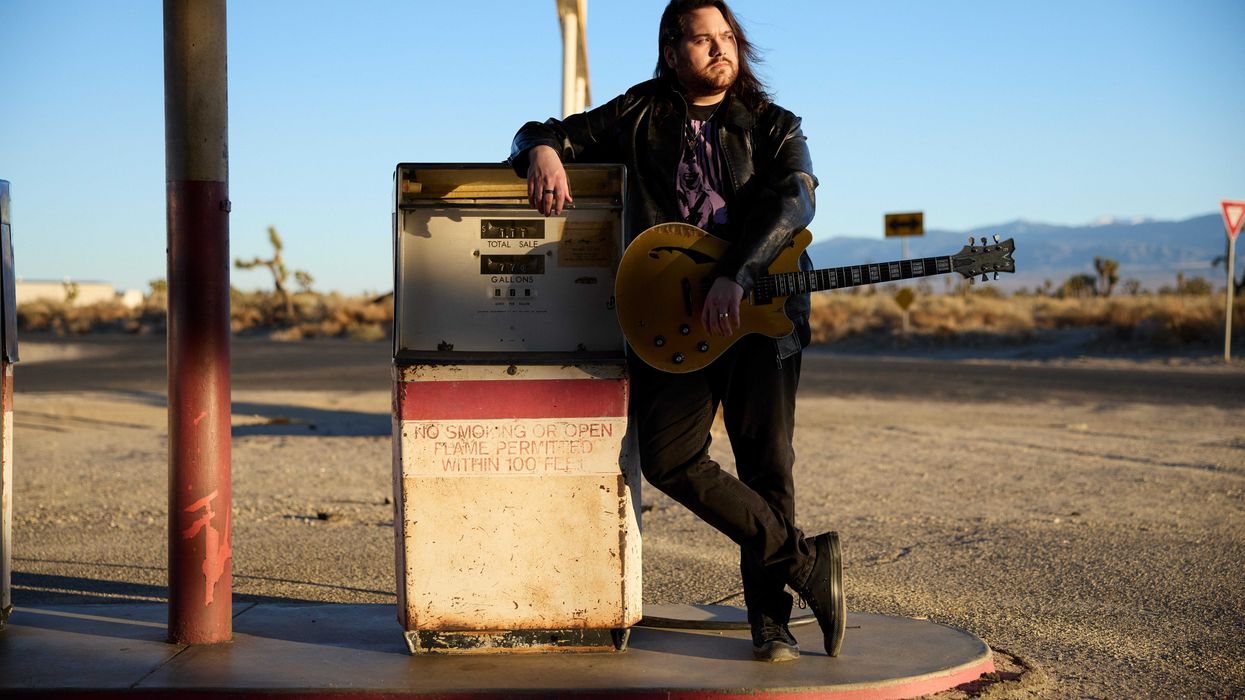
For many, Wolfgang Van Halen will always be defined by his famous origin story. The son of guitar legend Eddie Van Halen and actress Valerie Bertinelli, he first banged out rhythms on stacks of magazines before moving to real drums. As a teenager, he unexpectedly became the spark for Van Halen’s mid-2000s reunion with David Lee Roth—a run that brought long-awaited, sold-out tours, a 2012 studio album, and a 2015 live release. The band’s time, however, ended when Eddie passed away in October 2020 after a long battle with cancer. In the years between their final tour and his father’s death, Wolf had quietly been crafting a solo album, which he set aside to spend more time with Eddie.
In time, Van Halen returned to the music he’d quietly begun before his father’s passing. In late 2020, he unveiled his debut single, “The Distance,” a heartfelt tribute to Eddie that introduced his Mammoth WVH project to the world. The album that followed was very much his own—he wrote the songs, sang, and played all the instruments. From there, he quickly established himself on his own terms. Four years later, he was riding high on the strength of two acclaimed albums, with his sophomore effort, Mammoth II, building on the promise of his lauded debut. Throughout that cycle, Wolfgang did it his way—opening for Metallica, Foo Fighters, Creed, and Slash featuring Myles Kennedy and the Conspirators, while also packing venues nationwide on his first proper U.S. headlining tour.
While things couldn’t have been going any better professionally, Van Halen slowly felt the angst of this budding success catching up to him. On a September 2024 flight to Mexico to close out his stadium run with Metallica, the multi-instrumentalist felt a strange pain suddenly take over his body. Then his vision started to blur, and he felt like he was going to vomit. He turned to his uncle, Patrick Bertinelli, one of the “trusted people” who goes on tour with him, swiped at his leg, and told him he didn’t feel well in the manner of a seven-year-old who had a tummy ache. Cold and drenched in sweat, Van Halen’s uncle put his hand on his head and said, “Yeah, you don’t feel good, man.” After what felt like hours in the airplane bathroom—but was really about 25 minutes—the sensation finally passed.
What was really going on was the culmination of nerves that ended up being all-encompassing. With Mexico City’s altitude nearing 7,000 feet, and having never set foot in the city before, Van Halen was worried about how he’d be able to sing in high elevation. It was also the final show of the Metallica jaunt, so he wanted to wrap things on a positive note. Add to that a lack of sleep before the flight, and thoughts spun around in his head until he became physically sick.
Today, sitting backstage in Rhode Island ahead of another arena-opening date for Creed, the road-weary Van Halen can’t help but chuckle at that confluence of events.
“It was my first panic attack,” Van Halen says. “I never felt my body betray itself so hard. On paper, I’m a very anxious person, but that was a whole other level.”
For Van Halen, the angst of that moment proved to be a harbinger of the stresses that surrounded the making of his new third studio album.
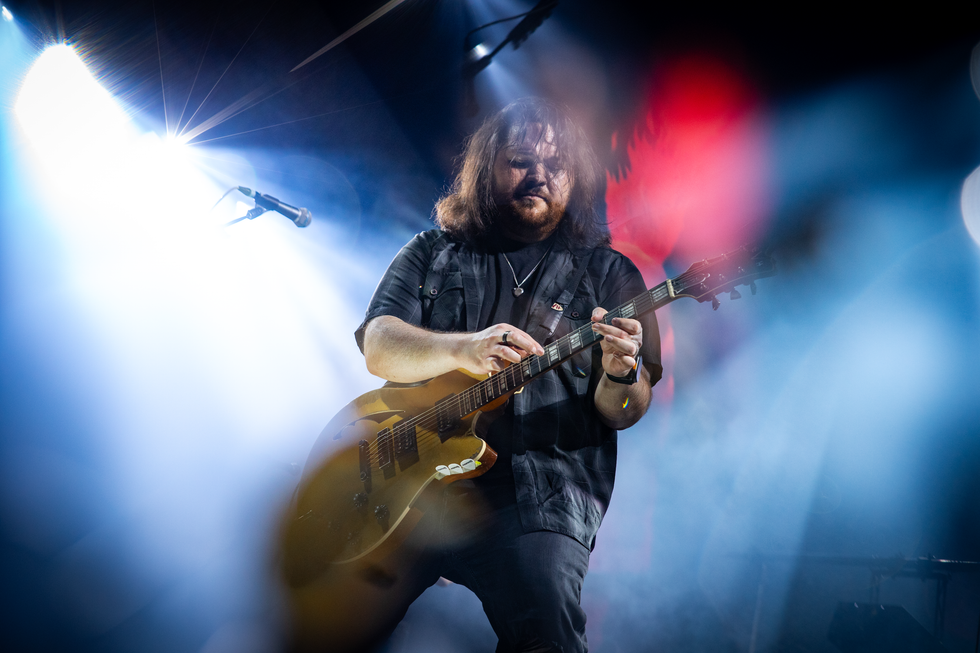
As he got to work on what was to become The End, Van Halen faced challenges beyond his control. For the better part of the past few years, the 34-year-old, along with longtime Van Halen family confidant and guitar tech Matt Bruck, painstakingly rebuilt 5150, the Los Angeles-area studio his father constructed and where every Van Halen album since 1984 had been recorded. The renovation was completed between Mammoth albums, making the recording process this time around far smoother and streamlining pre-production considerably.
While working on pre-production following the Metallica dates, Van Halen decided to make some changes, including rechristening the project Mammoth after securing the trademark to the name. Usually, Van Halen cooked up ideas on his laptop to hear them and see how they’d come together. In the rebuilt studio, fully operational to his standards, he could play a riff, run to the drums to track it, then hop over to the bass. This efficient setup allowed Van Halen, once again teaming with frequent collaborator Michael “Elvis” Baskette, to work much more smoothly. And, just like prior Mammoth albums, he played every instrument himself, calling it his “purest form of artistic expression.”
“When I was making Logic demos, the process of it bogged down the creativity,” he says. “It would take too long for me to get the drums that I wanted, so that I would give up, and the creativity would be lost.”
Now, armed with 5150 set up to his standards, the album came together quickly. Drawing from several unfinished ideas he’d carried over from previous writing sessions, Van Halen put a “fresh coat of paint” on them, setting off a creative chain reaction from which most of the ideas for The End emerged. He spent the next few months recording before heading back out on the road to play arenas with Creed.
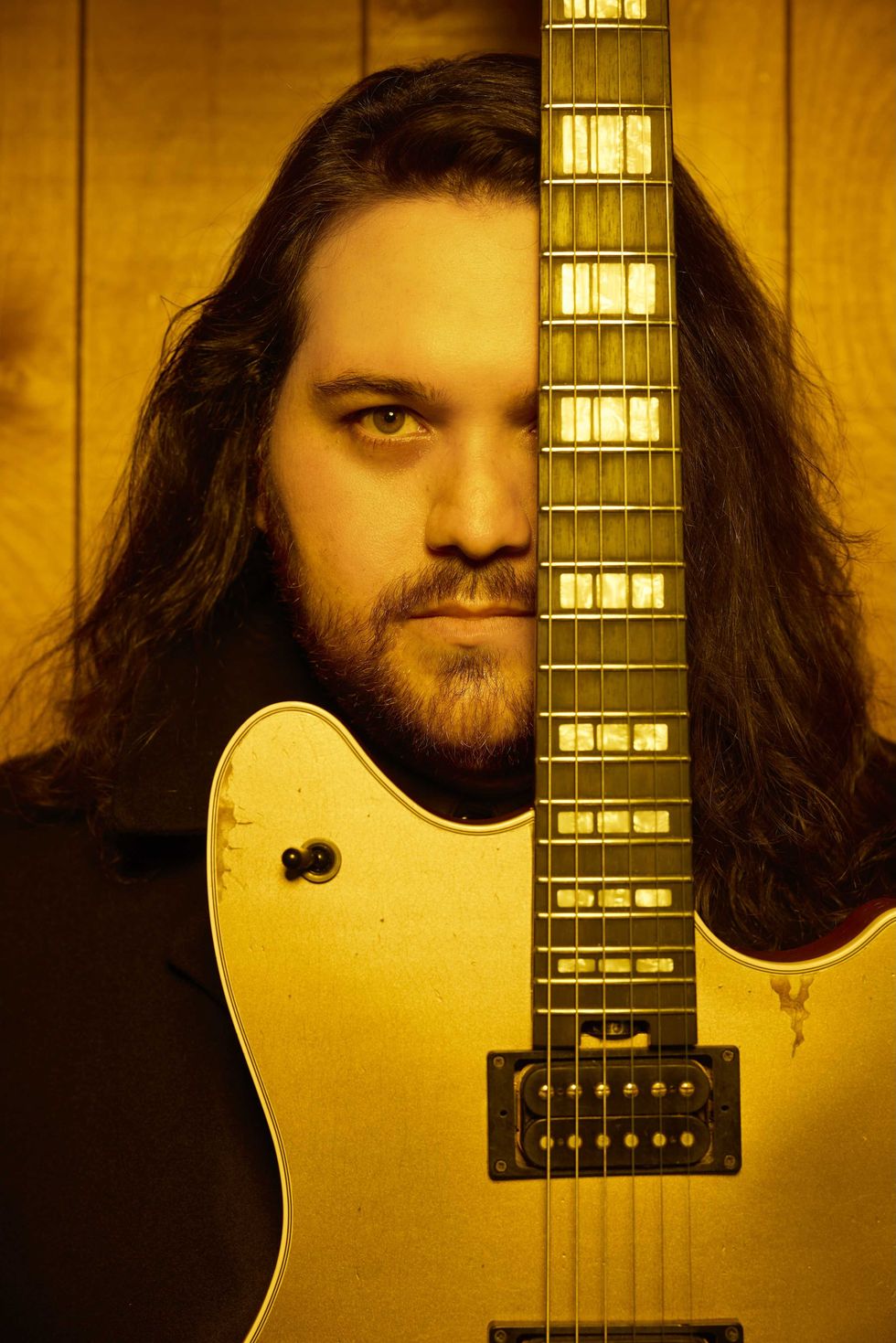
“In comparison to how I was on the first album, which was very reserved, guitar-wise, I’m starting to worry less about what people think and what people say.”
In January, though, problems arose. Van Halen wasn’t immune to the anxiety that the wildfires destroying parts of Los Angeles caused among the city’s residents. Their proximity to 5150 was never far from his mind, looming as a menacing presence that threatened both the Van Halen home and, in turn, his studio. This tension, set against the backdrop of working on new music, underscored the lurking horrors of Mother Nature. “That’s where most of the anxious, doomsday energy in the lyrics comes from,” he says. “I couldn’t focus on my things.”
With not just his gear, but also his father’s, sitting in 5150, Van Halen knew how important it was to keep everything safe. He recalls a three-week period when Eddie’s iconic Frankenstein guitar sat in the backseat of his car, ready to go in case he had to evacuate with little time to spare.
“I thought, I’ll have Frankenstein and my wife, and we’re good,” he says. “And then we had a U-Haul filled with whatever else we felt was worth saving, which was very tough. Luckily, it didn’t come to that, but it was a traumatizing time we’re still working through.”
That tense energy from this period—the panic attack on top of the fear of losing his father’s remaining physical possessions—is reflected throughout The End. Lyrically, Mammoth songs have always been Van Halen’s outlet for processing anxiety, even when the exuberant melodies suggest otherwise. This album was no different.
Songs like the Foo Fighters-inspired “I Really Wanna” (where he addresses standing up to the bullies he’s faced over the years … and there’s a particular pointed line that sharp-eared listeners will catch) and “One of a Kind”—two of his favorites—came together smoothly thanks to the streamlined pre-production process. In fact, he says he wouldn’t have taken a chance on the “wacky” tempo changes in “One of a Kind” without it.
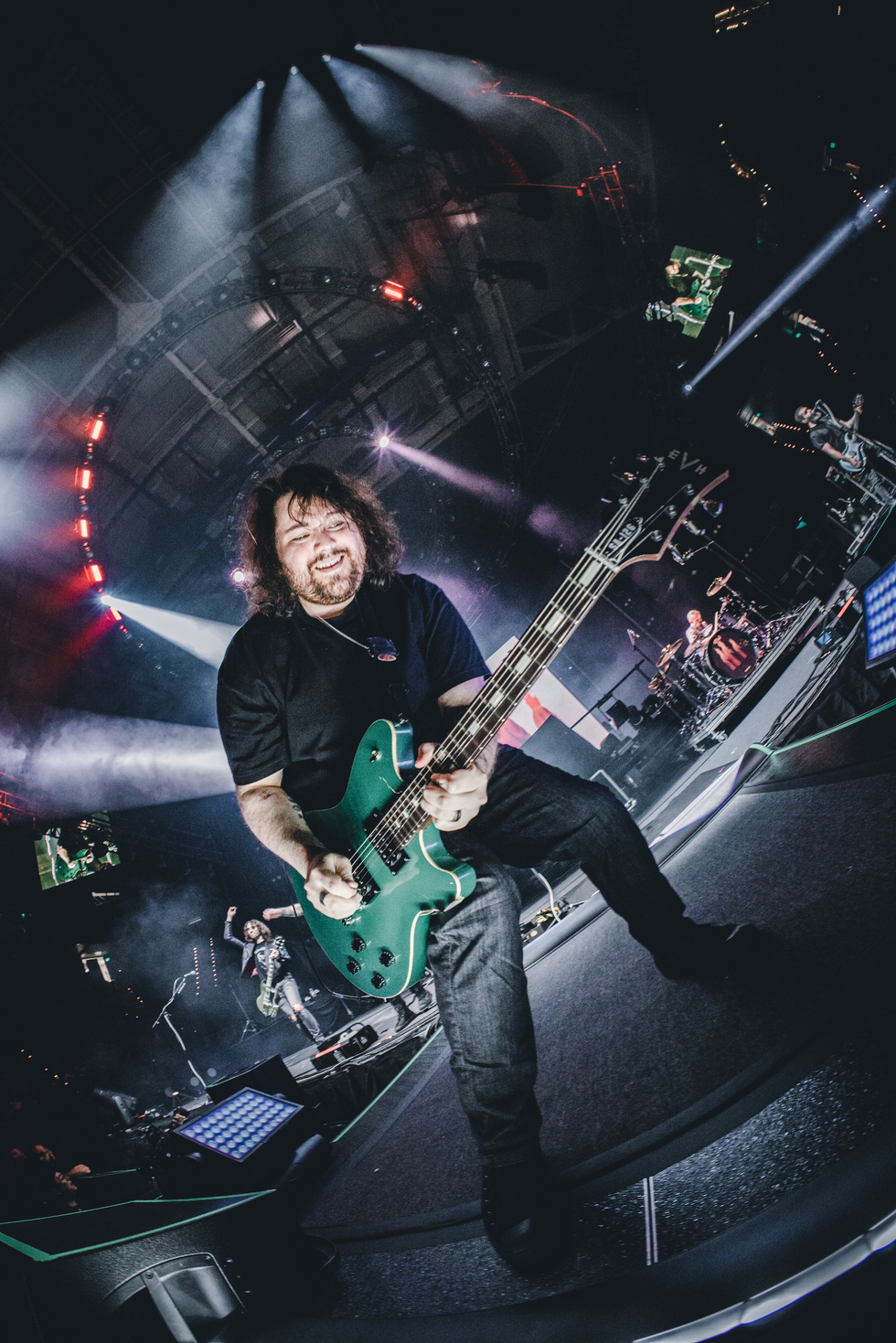
This didn’t mean the work was easy. Van Halen pushed himself as both a musician and vocalist, and laying down his vocals proved to be the toughest challenge yet. “I was uncomfortable a lot of the time,” he says of the process. But stepping out of his comfort zone—for example, on the bluesy “Better Off”—forced him to grow as a singer.
The End isn’t what its title implies. Instead, after finding his way on his first few albums, it’s a cohesive body of work that shows the depth and growth of Van Halen’s songwriting. Look no further than the title track, which opens with a tapped sequence reminiscent of you-know-who. (“It was fun to have that ear-catching moment,” he says.) It’s an idea Van Halen had been sitting for nearly a decade, just waiting for the perfect song where it would finally fit.
“I always thought it was a little over the top,” Van Halen says. “I thought of it as a challenge: ‘How can you make this the centerpiece of an idea, but still make a cohesive song around it?’ That was the songwriting challenge.”
It’s one that he aced. Throughout the song’s fun, in-your-face three-and-a-half minutes (listen closely, and there’s a nod to “Source of Infection” from OU812), Van Halen shreds with the confidence of a guitar wizard and the ease of a natural on what stands as The End’s leanest, meanest, most action-packed song. And speaking of action-packed, the accompanying video was directed by none other than legendary “Mariachi-style” filmmaker Robert Rodriguez.
A longtime fan of Rodriguez (Van Halen cites From Dusk to Dawn and Spy Kids as favorites), the two met at a show on the Mammoth II tour in the director’s hometown of Austin. The thought of Rodriguez directing a Mammoth video felt like a “pie-in-the-sky dream.” After playing demos of the new material for the filmmaker, Van Halen worked up the courage to ask Rodriguez if he’d be up for it, and he was intrigued. When Van Halen sent him the completed version of “The End,” Rodriguez came on board, bringing effects guru Greg Nicotero along with him.
“I never felt my body betray itself so hard. On paper, I’m a very anxious person, but that was a whole other level.”
“The amount of talent being utilized for such a silly thing just blew my mind,” Van Halen says of the zombie-themed video, which includes cameos from actor Danny Trejo, Slash, Myles Kennedy, and Valerie Bertinelli. “It was so fun … it was happy, with smiles throughout the whole shoot.”
At its core, The End is a balanced, guitar-driven album. Although Van Halen still considers himself a drummer—the first instrument he ever played—his guitar work has matured, and he sounds more confident than ever. There are flashes of virtuosity, as on the title track, but overall, he focuses on what best serves each composition.
“In comparison to how I was on the first album, which was very reserved, guitar-wise, I’m starting to worry less about what people think and what people say,” Van Halen explains. While The End, he says, “may be a bit reserved compared to Mammoth II, it feels more balanced this time around. It has a rawer vibe, and I was happy to keep the rough edges for people to feel like they’re in the studio with me.”
“There are a lot of expectations around me—so many preconceived ideas that it feels impossible for anyone to have a neutral opinion.”
With The End, Van Halen takes a reflective look inside. After years of having millions of fans watch him since he was barely able to drive, he’s finally comfortable with his place in music. So much so that it’s allowed him the vision to start looking further down the road. While recording The End was fruitful, four remaining song ideas weren’t fleshed out. Those could serve as the foundation to a fourth album, one that Van Halen notes that even without writing new material, he’d have plenty in the bank to draw from. By merging the old and new, he can turn a simple idea into something that feels more alive—a mantra he carries into every Mammoth session.
“There are a lot of expectations around me—so many preconceived ideas that it feels impossible for anyone to have a neutral opinion,” he says. “From the beginning, I’ve tried to stand out as my own person, without all of the bullshit that comes with the name and the controversies and everything that's come before me. It's just nice to be able to be judged for the music itself, rather than what people think or say about me.”
When reminded that some of his peers—musicians he admired as a young player—are now among rock’s biggest names, Van Halen quickly retorts that most people still see him as a kid. Some, he jokes, will never see him as anything more than that.
“That’s the tough thing!” he says with a laugh. “I feel like I'm gonna be a kid until I’m an old man. I’m never going to be just a guy. Like, I just want to be a guy.”Wolfgang Van Halen’s Gear
Guitars and Basses
EVH SA-126 goldtop (SA-126 Tim Shaw pickups)
EVH SA-126 Pink finish (SA-126 Tim Shaw pickups)
Prototype Wolfgang 4-string
Amp
EVH 5150III 50 Watt (6L6) (“NOEL”) w/ EVH 5150III 4x12 cabinet
Effects
Dunlop MXR EVH Phase 90
Dunlop MXR EVH Flanger
Dunlop Cry Baby EVH wah
Dunlop MXR Micro Flanger
Dunlop MXR Micro Chorus
Dunlop MXR Sub Machine
Dunlop MXR Uni-VibeDunlop MXR Uni-Vibe
ZVEX Woolly Mammoth Vexter
Electro-Harmonix Micro Synthesizer (vintage)
Electro-Harmonix Small Clone
EarthQuaker Devices Hoof Reaper
Ceriatone Centura
DigiTech DOD Envelope Filter 440
Boss RE-202 Space Echo
Boss OC-3 Super Octave
Boss RV-6 Reverb
Boss CE-5 Chorus Ensemble
Guild Brian May boost
Strings, Picks, and Accessories
Dunlop Max-Grip .60mm
EVH .010–.049
EVH cables
Crazy Tube Circuits Announces Mirage JR
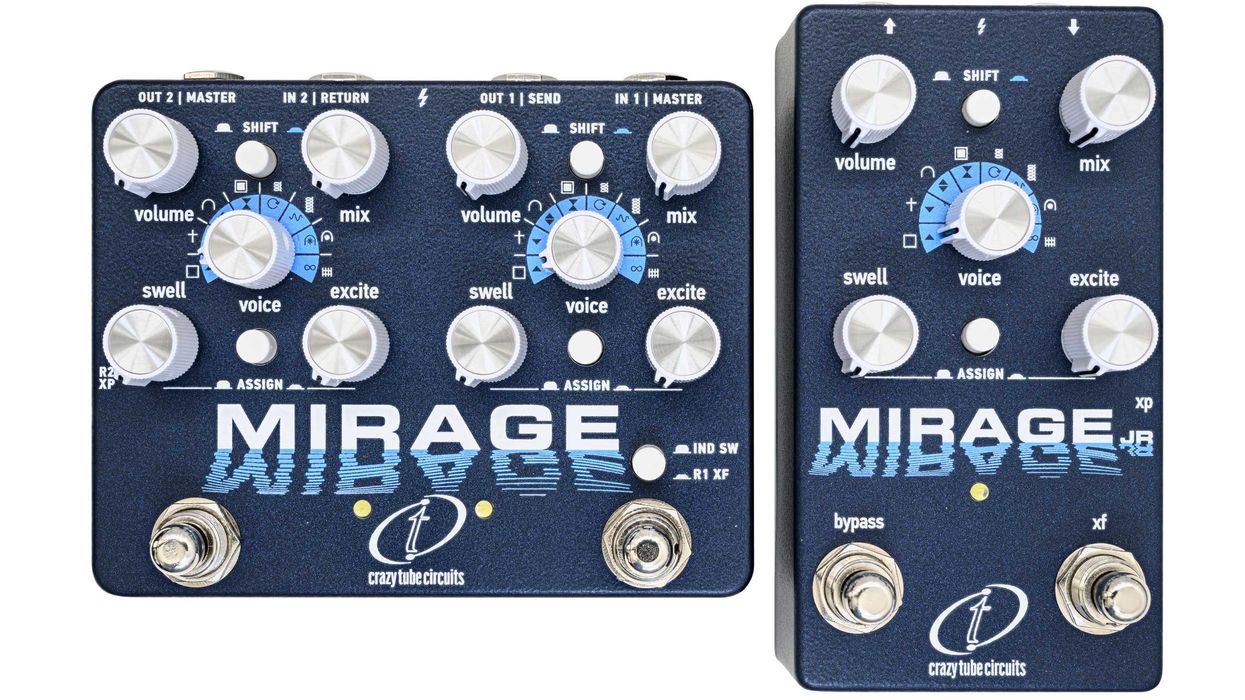
Crazy Tube Circuits are proud to introduce the Mirage JR, a streamlined version of the Mirage dual-engine reverb.
Engineered with the same studio-grade processing power as its big brother, Mirage JR delivers the lush, detailed soundscapes in a more compact, pedalboard-friendly design. Featuring a curated selection of 16 immersive reverb algorithms that cover everything from authentic room and spring emulations to expansive ambient textures.
Mirage JR is a compact reverb powerhouse that delivers all the creative range of its big sibling in a streamlined, single-engine mono format. It offers the same studio grade processing, intuitive layout, and algorithm selection.
Built for guitarists, bassists, synth players, and ambient creators who want maximum sound without complexity. Whether you’re chasing vintage plate tones, cinematic shimmer, or frozen walls of reverb, Mirage JR brings it all together in one expressive unit.
The reverb engine runs any of 16 carefully crafted reverb algorithms, organized into two banks of natural, familiar spaces or modern and experimental territories. Four dedicated knobs and two expression controls enable powerful real time interactions, from expressive shimmer bursts and freeze triggers to evolving modulated textures.
Despite its compact footprint, Mirage JR gives you plenty to show off, visually, sonically, and practically. It shines as a mono front end spatial effect, but it’s equally at home in pedal switchers, synth setups, or even as a send effect in the studio, bringing the magic of the original Mirage to any rig.
Street price $249
For more information visit www.crazytubecircuits.com/mirage-jr
Spector Introduces the NS Icon Bolt-On Series
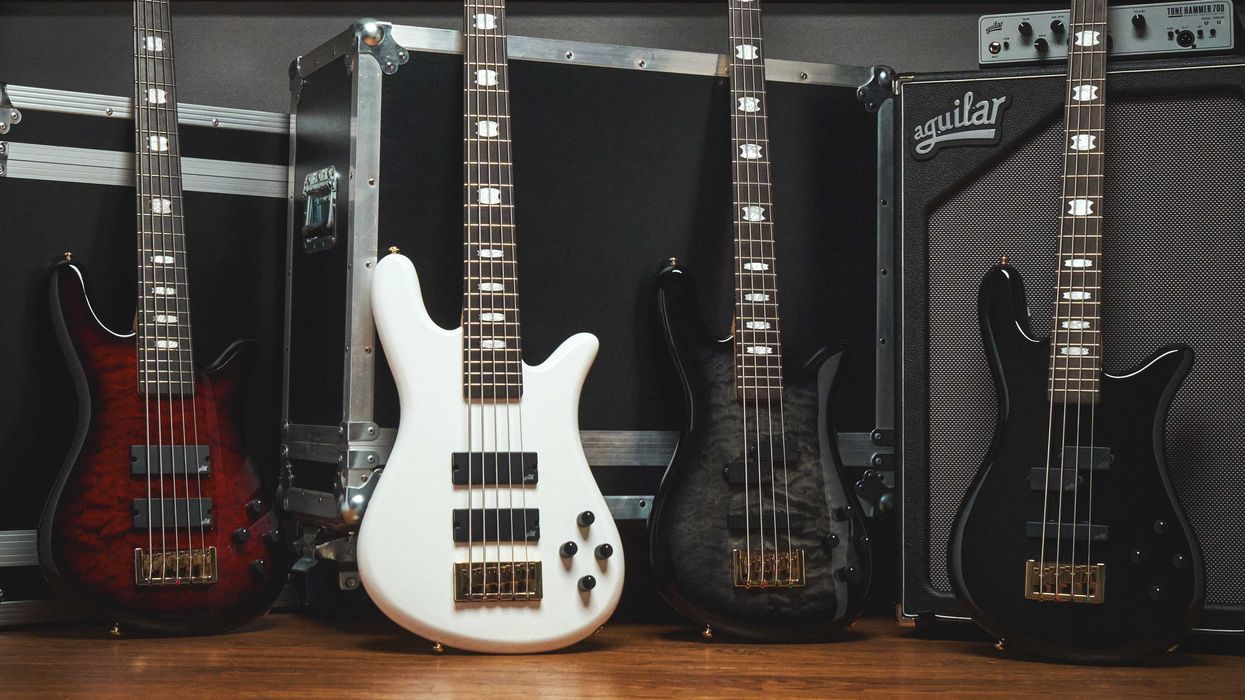
For nearly five decades, Spector has been synonymous with innovation, craftsmanship, and the unmistakable tone that has shaped the sound of modern bass. Today, Spector unveils the next evolution in the storied lineage: the NS Icon Bolt-On series.
The NS Icon Bolt-On brings the revered NS design into a bold new era. Designed by the expert luthiers at the Spector Custom Shop in Woodstock, NY, this new series captures the essence of the flagship instruments while offering a fresh take for today’s player. With its fully carved body, premium tonewoods, and professional-grade hardware, the NS Icon Bolt-On delivers the iconic Spector feel and tone in a bolt-on format.

Each NS Icon Bolt-On features a resonant Alder body paired with a bolt-on 3-piece rock maple neck and a smooth rosewood fingerboard—tonewoods that have defined Spector’s sonic signature for generations. The body’s fully curved contour ensures unmatched comfort and playability, while the neck profile, nut width, and fingerboard radius are meticulously crafted to meet the standards of our Custom Shop.
“The NS Icon Bolt-On brings the essence of Spector to more players than ever before. We took everything players have loved about USA built NS basses for nearly 50 years and combined them with a classic Bolt-On construction to achieve a playing experience that is both immediately recognizable and unique at the same time. The introduction of the NS Icon Bolt-On is the next step on our journey of bringing the best that Spector has to offer to bass players at every level.” - Wil DeYoung – Spector Custom Shop Manager
Available in both 4-string and 5-string configurations, players can choose from two solid gloss finishes: Black and White, or two stunning stain finishes: Black Cherry and Black Stain, each adorned with a highly figured quilted maple top. Gold hardware, signature Crown inlays, a polished brass nut, and a fully intonating locking bridge complete the look.
At the heart of the NS Icon Bolt-On is a custom-voiced electronics package developed in collaboration with Aguilar. The 4-string model features a Reverse P and J pickup configuration, while the 5-string boasts dual Soapbar pickups. Paired with the Aguilar OBP-2 preamp, these pickups deliver the deep, articulate lows and crystal-clear highs that define the Spector sound—now with even greater versatility.
To learn more about the NS Icon Bolt-On please visit www.spectorbass.com
Street Price: $1199.99 USD NS-4 Icon
$1299.99 USD NS-5 Icon
Levy’s New Night Life, Clairvoyant, and Holiday Strap Series
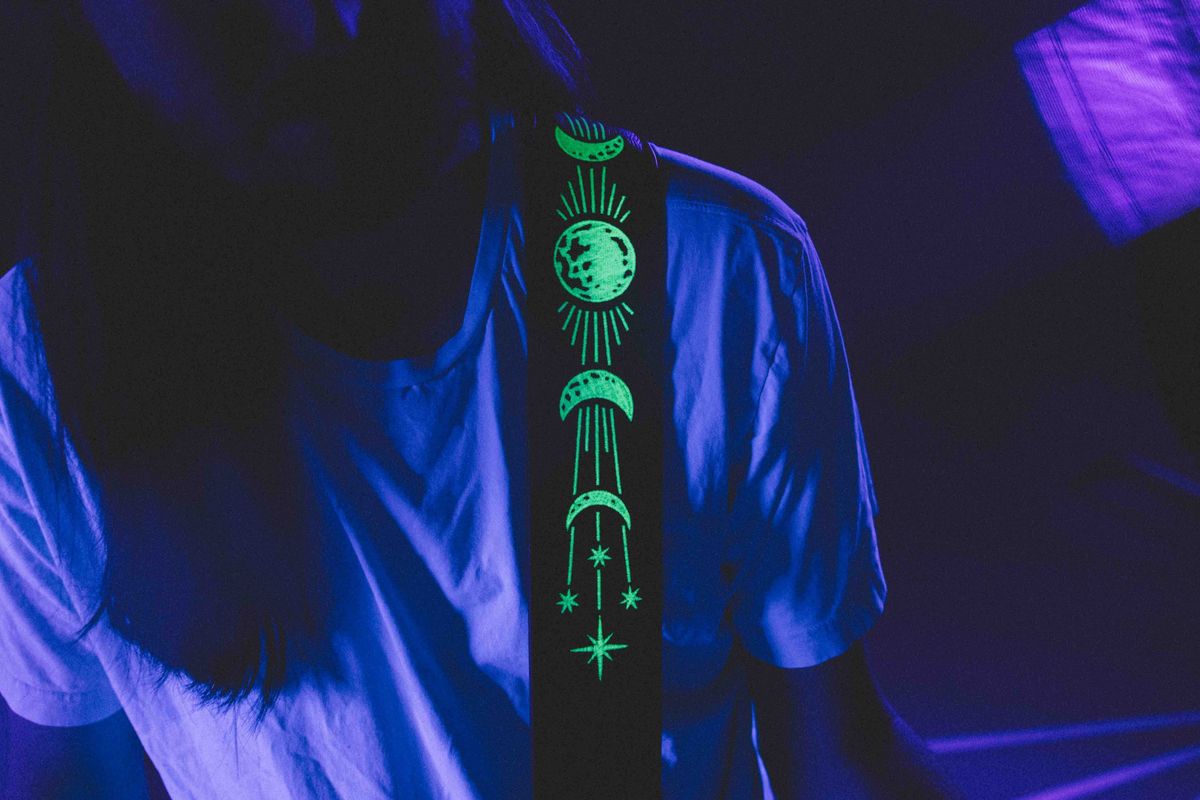
Levy’s Music has introduced two new guitar strap series designed to capture attention in the dark and tap into the mystic. The Clairvoyant Series and Night Life Series blend visual storytelling with performance-ready functionality, expanding the Levy’s collection with bold new designs for expressive players.
The Night Life Series features black leather straps embroidered with spider webs, lightning bolts, and moon-and-star motifs that glow in the dark after charging under light. Built from soft garment leather and sized for comfort during long sets, the straps are designed to deliver a showstopping look without compromising durability.
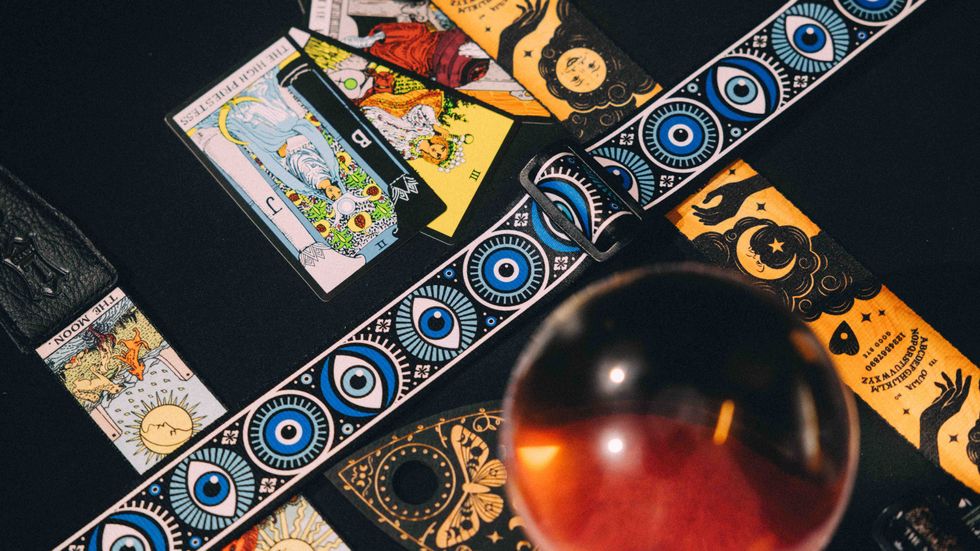
The Clairvoyant Series explores supernatural symbolism through printed poly straps inspired by tarot cards, Ouija boards, and the protective gaze of the evil eye. Each design brings an otherworldly aesthetic to the stage while offering practical features like genuine leather ends and adjustable length for versatile use. Both series are handcrafted in Nova Scotia and available now through authorized Levy’s dealers and distributors.

Levy’s is expanding its holiday-themed Christmas Strap Series with two new designs: the Plaid Christmas Strap and the Ugly Christmas Sweater Strap. Both styles join the existing seasonal lineup and bring fresh holiday personality to Levy’s’ growing collection of print straps.
Handcrafted in Nova Scotia, Canada, each strap delivers the comfort and quality Levy’s is known for while embracing playful, festive visuals. The Plaid Christmas Strap features a classic red and green tartan pattern, while the Ugly Christmas Sweater Strap leans into bold, sweater-inspired graphics that celebrate the lighter side of the season.
Both straps are constructed with standard series materials, including a polyester body and genuine leather ends, and adjust from 35.25 to 60.5 inches to suit a variety of playing styles and instruments. To learn more about Levy’s guitar straps and music accessories, visit www.levysleathers.com.
“It will never stop – thank God”: John 5 names three modern guitarists who are ensuring that the guitar will “keep evolving”

While conversations about typical guitar heroes generally tend toward the likes of Eddie Van Halen, Jimi Hendrix and Jimmy Page, there are plenty of modern players pushing the envelope.
And in a new interview with We Wreck Records, Mötley Crüe and Rob Zombie guitarist John 5 names some of the guitarists he feels are keeping the instrument exciting.
John 5 – real name John William Lowery – is quick to rattle off the names of Polyphia (guitarists Tim Henson and Scott LePage), as well as English guitarist Guthrie Govan and Animals as Leaders founder Tosin Abasi.
“It will always keep evolving. And you know what? Thank God for it,” he says [via Ultimate Guitar]. “There’s so many incredible guitar players. And even before Jimi Hendrix, we had Chet Atkins, we had Roy Clark, all these people that were just ripping it up on guitar.”
John 5 believes the widespread adoption of social media has led to the emergence of talents who would have otherwise stayed hidden.
“I love anybody that is ripping it up,” he says. “And that’s why I love Instagram so much, because you can see people all over the world. But before, you just would see people in Hollywood or hear about them in Guitar Player magazine. But now I can hear about somebody in Russia or someone in Brazil, and it’s wonderful.”
Asked to name three guitarists who have had a big impact on him personally, John 5 names some more traditional guitar heroes: “The three guitarists that changed music…
“I think where I was really taken aback and it really changed my life, I would say Eddie Van Halen definitely was that for me. And when I heard Eddie, I loved it so much, just like everybody else. He really took it to the next level.”
“Then I would say Yngwie Malmsteen, because I just love that… That ‘less is more’, I’ve never gotten that. I’ve always gotten the, ‘No, more is more.’ And that’s what I loved about Yngwie. And then I’m gonna go with even Guthrie for today, modern. I just love him so much. I just love how he creates his solos and how he plays live.”
“I appreciate great guitar players so much, and it’s so hard to find inspiration, but I’m always looking. But I really, really love when I find these certain guitar players that are super inspiring, to me and the world.”
The post “It will never stop – thank God”: John 5 names three modern guitarists who are ensuring that the guitar will “keep evolving” appeared first on Guitar.com | All Things Guitar.



